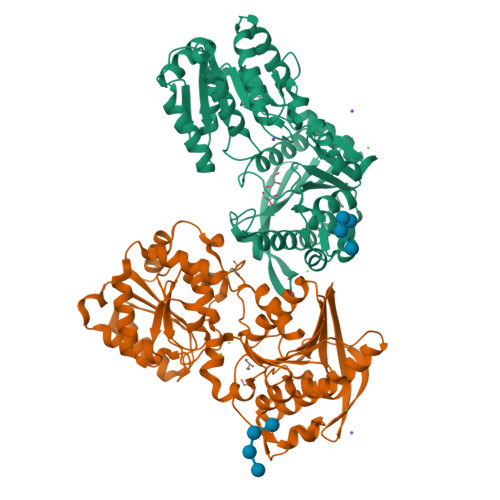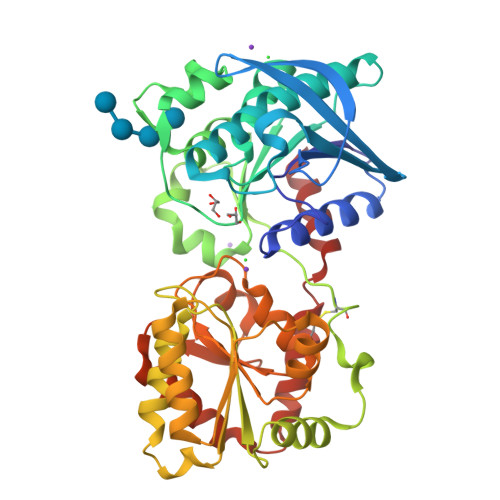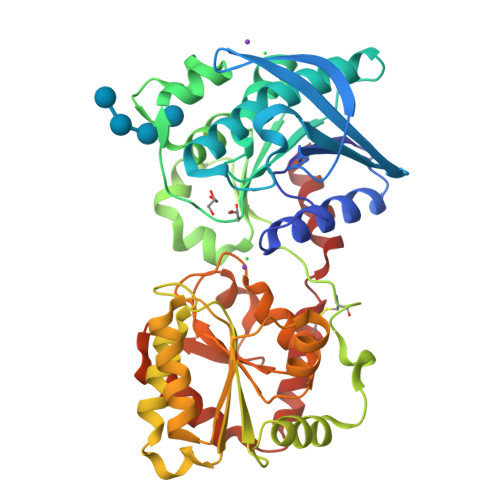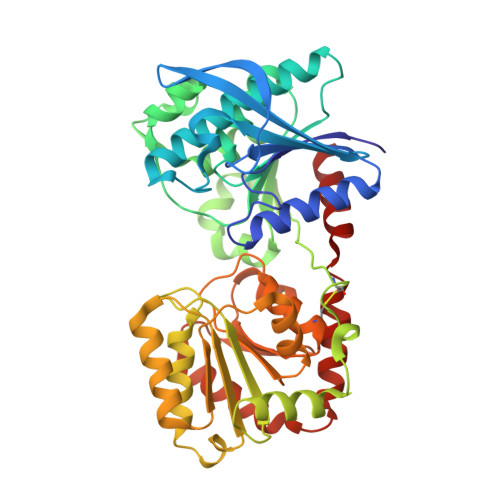Processivity and Subcellular Localization of Glycogen Synthase Depend on a Non-catalytic High Affinity Glycogen-binding Site.
Diaz, A., Martinez-Pons, C., Fita, I., Ferrer, J.C., Guinovart, J.J.(2011) J Biological Chem 286: 18505-18514
- PubMed: 21464127
- DOI: https://doi.org/10.1074/jbc.M111.236109
- Primary Citation of Related Structures:
3L01 - PubMed Abstract:
Glycogen synthase, a central enzyme in glucose metabolism, catalyzes the successive addition of α-1,4-linked glucose residues to the non-reducing end of a growing glycogen molecule. A non-catalytic glycogen-binding site, identified by x-ray crystallography on the surface of the glycogen synthase from the archaeon Pyrococcus abyssi, has been found to be functionally conserved in the eukaryotic enzymes. The disruption of this binding site in both the archaeal and the human muscle glycogen synthases has a large impact when glycogen is the acceptor substrate. Instead, the catalytic efficiency remains essentially unchanged when small oligosaccharides are used as substrates. Mutants of the human muscle enzyme with reduced affinity for glycogen also show an altered intracellular distribution and a marked decrease in their capacity to drive glycogen accumulation in vivo. The presence of a high affinity glycogen-binding site away from the active center explains not only the long-recognized strong binding of glycogen synthase to glycogen but also the processivity and the intracellular localization of the enzyme. These observations demonstrate that the glycogen-binding site is a critical regulatory element responsible for the in vivo catalytic efficiency of GS.
Organizational Affiliation:
Institute for Research in Biomedicine, Universitat de Barcelona, Barcelona, Spain.
























